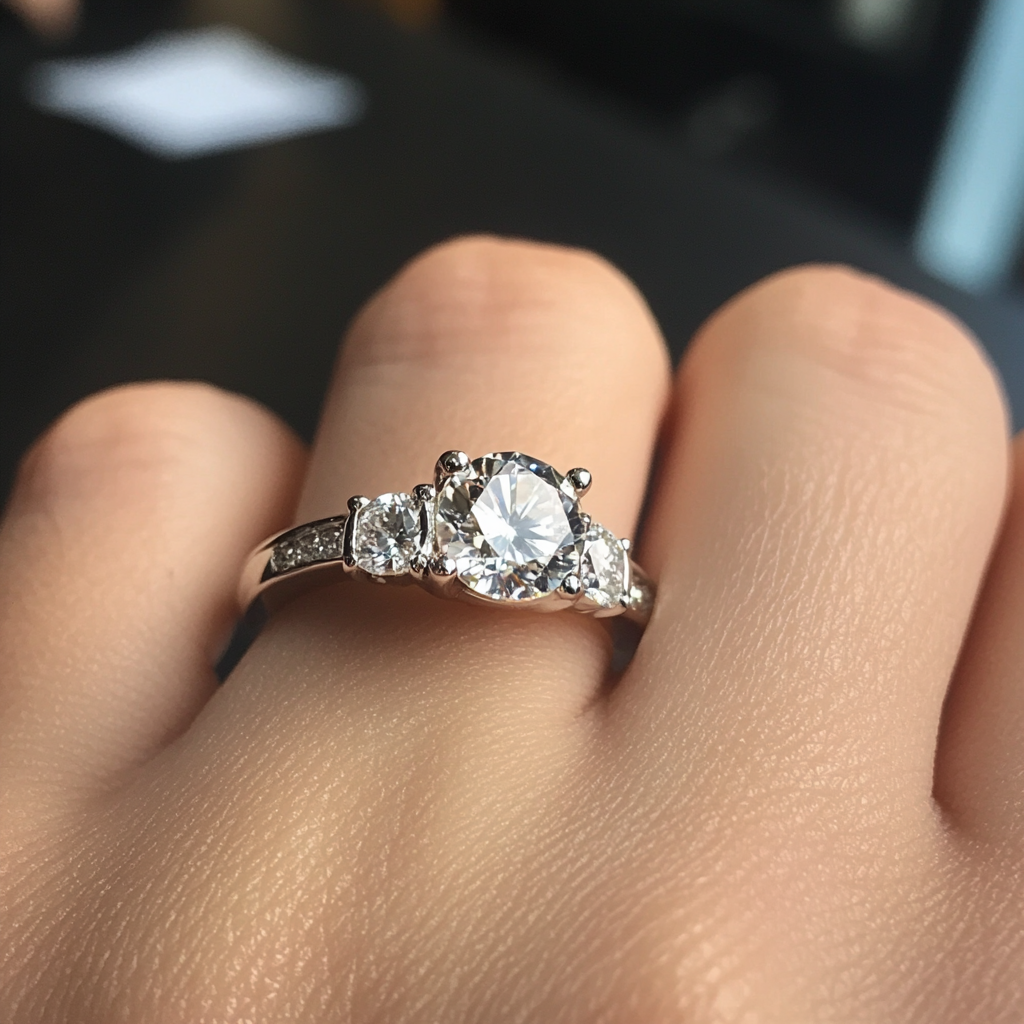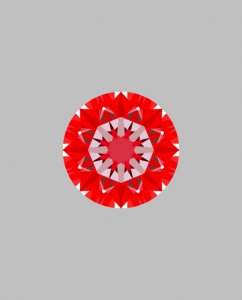You are using an out of date browser. It may not display this or other websites correctly.
You should upgrade or use an alternative browser.
You should upgrade or use an alternative browser.
Need Expert Advice on Pavilion Angle!
- Thread starter barry1
- Start date
- Status
- Not open for further replies. Please create a new topic or request for this thread to be opened.
The difference would be in the light return. However, you're making the mistake of assuming that the angles are all the same. They usually aren't because the diamond has a hard side of the grain. The variance between the facets is what is important to know.
In addition, consider that there are twice as many lower girdle facets than there are pavilion mains. 8 vs. 16. So don't you think knowing all the facet angles is relevant and important to know?
Rockdoc
In addition, consider that there are twice as many lower girdle facets than there are pavilion mains. 8 vs. 16. So don't you think knowing all the facet angles is relevant and important to know?
Rockdoc
- Joined
- Mar 28, 2001
- Messages
- 6,341
I would add that it really depends on what crown angles you are coupling with those pavilion angles. The steepness of the angles may flatter the stone or hurt it depending upon which crown angles are being coupled with it. There's also the possibility that neither pavilion angle flatter the crown that's with it or vice versa. Knowing both sets of data (crown & pavilion) are critical to making any predetermined opinion (as well as rockdocs point of the variances and minor facets). If you are about to drop a substantial amount on a diamond the small fraction it costs to find out the important details with a qualified appraiser can't be stressed enough.
Peace,
Rhino
Peace,
Rhino
There is not exact "formula" trimming the pavilion angle to crown angles that becomes the ultimate combination.
While the diagnostic programs we use are very helpful in determining light return, the diamond has to be examined in order to determine how well the refraction is.'
Also keep in mind that the angle of LIGHT ENTRY is directly relevant to LIGHT EXIT.
When worn, the diamond will not be subjected to "fixed" - ivory tower lab standards. These standards are necessary to make accurate comparisons, but once you take the diamond into the real world the standardized light entry scenario won't apply.
In addition, diamond refract based also on the type of light its exposed to.
If you take it outside on a grey overcast day, you'll get the refraction of grey overcast, dull light. If you take it out on a bright sunny day, most diamonds will almost blind you with dispersive spectral refraction.
Regardless of which expert you pick, you should have your portential selection checked by someone who has the proper equipment and the expertise to advise you without bias about the stone.
Some consumers want the "cat's meow" of light refraction, internal symmetry and cut quality, some are willing to accept a little less, providing the price being charged is competitive and establishes and good value with POSSIBLY only a small difference
Hope this helps.
Rockdoc
While the diagnostic programs we use are very helpful in determining light return, the diamond has to be examined in order to determine how well the refraction is.'
Also keep in mind that the angle of LIGHT ENTRY is directly relevant to LIGHT EXIT.
When worn, the diamond will not be subjected to "fixed" - ivory tower lab standards. These standards are necessary to make accurate comparisons, but once you take the diamond into the real world the standardized light entry scenario won't apply.
In addition, diamond refract based also on the type of light its exposed to.
If you take it outside on a grey overcast day, you'll get the refraction of grey overcast, dull light. If you take it out on a bright sunny day, most diamonds will almost blind you with dispersive spectral refraction.
Regardless of which expert you pick, you should have your portential selection checked by someone who has the proper equipment and the expertise to advise you without bias about the stone.
Some consumers want the "cat's meow" of light refraction, internal symmetry and cut quality, some are willing to accept a little less, providing the price being charged is competitive and establishes and good value with POSSIBLY only a small difference
Hope this helps.
Rockdoc
Richard Sherwood
Ideal_Rock
- Joined
- Sep 25, 2002
- Messages
- 4,924
The 41.2 degree pavilion angle seems to be more agreeable with the 34.3 degree crown angle than the 41.5. A HYPOTHETICAL simulated IdealScope image of each follows. Both stones will have some darkness just inside the table facet, with the 41.5 degree stone having a fair amount more darkness than the 41.2.
The POSSIBLE stats on the two profiles line up like so:
.....................................41.2'..............................41.5'
Light Return Mono…….....Very Good 0.98..................V.Good to Good 0.92
Light Return Stereo……….Very Good 0.97...................Very Good 0.96
(Non) Leakage Mono……...Good to V.Good 0.90..............Poor (Fair) 0.57
(Non) Leakage Stereo…….Good 0.73.....................Good to Poor (Fair) 0.67
Contrast………….......…....V.Good to Good 0.93..............Very Good 1.00
(Non) Fisheye Effect……..Very Good 1.00...................Very Good 1.00
-----------
IdealScope- In general, the darker pink areas indicate areas of greater light return, with the lighter pink areas indicating areas of lesser light return. The black areas indicate areas of greater contrast, with the gray areas indicating areas of lesser contrast. The white areas indicate areas of light leakage. A good explanation of the IdealScope image along with examples can be found at https://www.pricescope.com/idealscope_indx.asp
Disclaimer- The facet arrangement and symmetry of the image will probably vary from your actual diamond, which may affect the light performance indicated. The image shown has perfect symmetry, which is rare, and the star facet/lower girdle facet lengths may vary from your diamond. The computer simulation is reproduced best when the actual diamond is being viewed and the image "tweaked" to the appearance of the diamond, or when the Sarin data is downloaded directly into the program. However, this "blind" reproduction should be helpful in indicating the major light performance aspects.
-----------
The POSSIBLE stats on the two profiles line up like so:
.....................................41.2'..............................41.5'
Light Return Mono…….....Very Good 0.98..................V.Good to Good 0.92
Light Return Stereo……….Very Good 0.97...................Very Good 0.96
(Non) Leakage Mono……...Good to V.Good 0.90..............Poor (Fair) 0.57
(Non) Leakage Stereo…….Good 0.73.....................Good to Poor (Fair) 0.67
Contrast………….......…....V.Good to Good 0.93..............Very Good 1.00
(Non) Fisheye Effect……..Very Good 1.00...................Very Good 1.00
-----------
IdealScope- In general, the darker pink areas indicate areas of greater light return, with the lighter pink areas indicating areas of lesser light return. The black areas indicate areas of greater contrast, with the gray areas indicating areas of lesser contrast. The white areas indicate areas of light leakage. A good explanation of the IdealScope image along with examples can be found at https://www.pricescope.com/idealscope_indx.asp
Disclaimer- The facet arrangement and symmetry of the image will probably vary from your actual diamond, which may affect the light performance indicated. The image shown has perfect symmetry, which is rare, and the star facet/lower girdle facet lengths may vary from your diamond. The computer simulation is reproduced best when the actual diamond is being viewed and the image "tweaked" to the appearance of the diamond, or when the Sarin data is downloaded directly into the program. However, this "blind" reproduction should be helpful in indicating the major light performance aspects.
-----------
Richard Sherwood
Ideal_Rock
- Joined
- Sep 25, 2002
- Messages
- 4,924
Richard Sherwood
Ideal_Rock
- Joined
- Sep 25, 2002
- Messages
- 4,924
- Status
- Not open for further replies. Please create a new topic or request for this thread to be opened.
Share:
Past, Present, Future: The Meaning of Three-Stone Engagement Rings Past, Present, Future: The Meaning of Three-Stone Engagement Rings - 04/14
Past, Present, Future: The Meaning of Three-Stone Engagement Rings - 04/14







300x240.png)